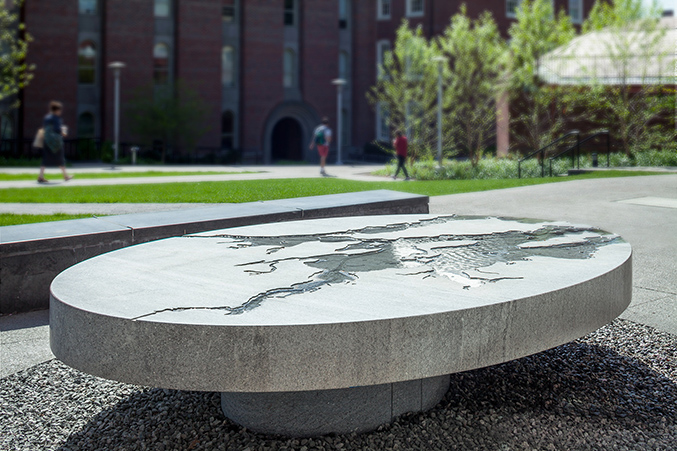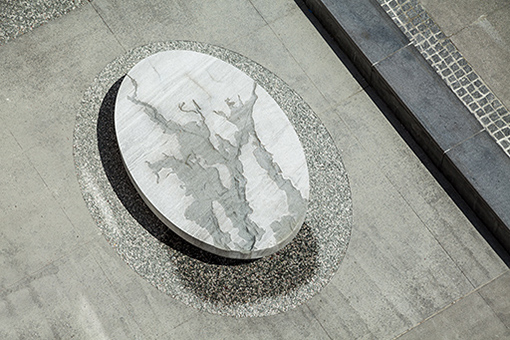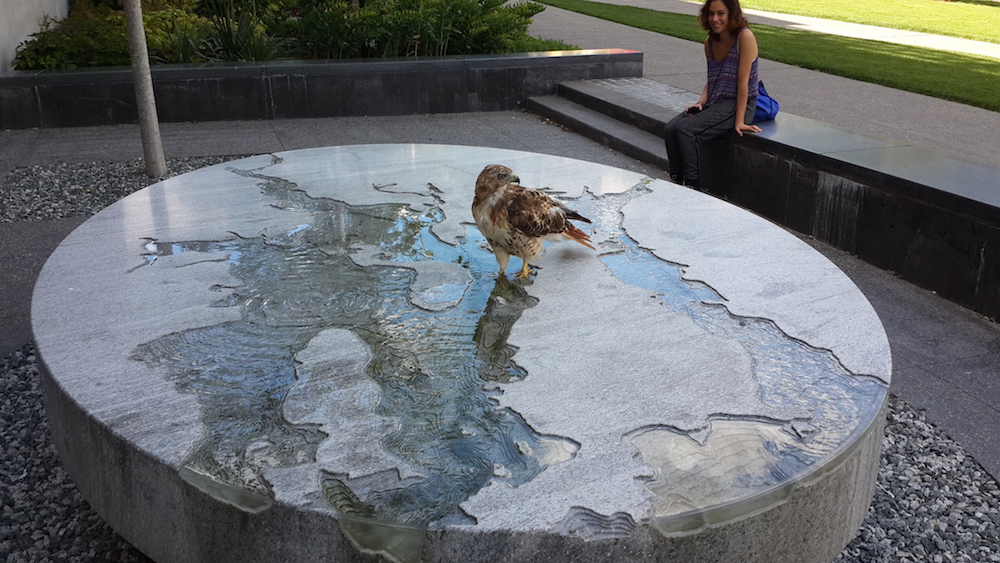
Maya Lin | Under the Laurentide
Maya Lin
Under the Laurentide, 2014
- Granite, water
- 11' x 7' x 27"
- Installed at the east entrance of the Institute at Brown for Environment and Society
Maya Lin’s Under the Laurentide, 2014, is the latest addition to Brown University’s growing public art collection. It is at the east entrance plaza of 85 Waterman, an interdisciplinary facility that houses the Institute at Brown for Environment and Society (IBES), as well as labs for the environmental sciences and engineering. This is the fourth water table the artist and architect has designed for a public site. Lin approaches public art by trying to “understand the ‘why’ of a project before its ‘what.’” [1] In that spirit, Under the Laurentide, which was commissioned in conjunction with Brown’s public commitment to advanced environmental research, responds to IBES's activities, the region’s ecology, and Lin’s own longstanding interest in the natural world.

Lin has long been fascinated by the movement of water. She has studied ocean wave formations and created permanent earthworks in their image (Storm King Wavefield, 2009), mapped the contours of our oceans and seas, which are at risk from climate change (Bodies of Water, 2009, and Disappearing Bodies of Water, 2013), and petrified the landscapes of rivers and estuaries in recycled silver and steel (Pin River—Potomac, 2009 and Silver Chesapeake, 2009). Under the Laurentide continues Lin’s exploration of vulnerable water resources, looking specifically at Rhode Island’s largest waterfront, the Narragansett Bay. The work consists of an oval slab of Chelmsford stone etched with the topography of the Narragansett Bay. A thin layer of water flows over this landscape, following the natural course of water from the Seekonk, Providence, Taunton, and other rivers into the Bay and onto the Atlantic.
Lin has described her work as “constantly exploring and revealing aspects of the natural world [such as] places that are hidden beneath the surface of the water…” [2] Between c. 95,000 and c. 20,000 years ago, the Laurentide Ice Sheet covered most of North America. This massive glacier shaped much of New England’s geological profile, including the Narragansett Bay. As its name suggests, Under the Laurentide makes visible the submerged landscape of the Bay’s floor, once buried deep beneath the glacier.
Lin’s water tables often evoke the past in order to confront the future. A recent study shows the Narragansett Bay and its surrounding coastline are at risk from rising sea levels and increased pollutants. [3] In drawing attention to the forces that once shaped the Bay, Under the Laurentide serves as a simple yet stark reminder of climate change and the urgency of the research taking place at the IBES.

[1] Interview with Maya Lin, A Bill Moyers Special: Becoming American, The Chinese Experience, PBS, March 25-27, 2003.
[2] Maya Lin, Unpublished design proposal for Hunter Lab sculpture, Brown University, September 26, 2012.
[3] Leslie M. Smith, Sandra Whitehouse, and Candace A. Oviatt, “Impacts of Climate Change on Narragansett Bay,” Northeastern Naturalist 17, no. 1 (2010): 77-90.